
Natural Soap: Lemon Lavender
- Out Of Stock

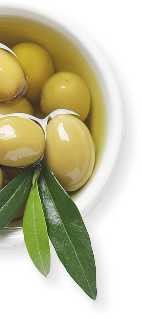
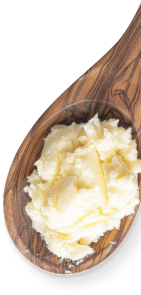
An organic deodorant with a fresh lemony scent that readily absorbs into the skin. Shea butter, jojoba oil and coconut oil soothe delicate underarms while cornstarch helps absorb perspiration. Essential oils and a tiny bit of baking soda neutralize odor causing bacteria.





Meet our new and improved stick deodorant formula with a smoother, silkier glide!
Our organic natural stick deodorant, with a refreshing, clean scent, readily absorbs into your skin.
It is made with soothing and moisturizing ingredients that effectively neutralize odor and organic cornstarch to help absorb wetness, so you stay fresh naturally. Our stick deodorants contain a small amount of baking soda.
An aluminum free, paraben free, synthetic-free, artificial fragrance-free, plastic-free, eco-friendly, UDSA organic, and sustainable natural deodorant.
Packaged in recyclable, push-up paperboard tubes with FSC certification--No plastic!
Still looking? Explore our other customer-approved organic deodorant options.
Use daily in place of your old deodorant. Apply a very thin layer onto clean, dry underarms.
NOTE: Our natural deodorants are made from organic plant oils and butters. Since water and oil do not mix, it is best to always apply to dry underarms otherwise the deodorant may not absorb into to your skin and can end up on your clothes.
Remove the top and gently push up on the tube base to expose a small amount of deodorant. Hold it on your dry armpit a few moments. Your natural body warmth softens the deodorant to ensure a smooth, even application and prevent irritation from friction. Then gently swipe 1-2 times. Yes, 1 to 2 swipes on each armpit is all you need. More is not better!
Before replacing the cap on your the tube, tap the bottom of the tube on a hard surface and the product should slide back into the tube. Do not use your fingers to push the product back in from the top or you will literally have a mess on your hands.
Most people transition seamlessly to a natural deodorant, while some report a transition period. Each of us is a unique individual and our armpit microbiome is also unique. If your armpits are used an antiperspirant or deodorant made with synthetic ingredients, please allow time for your armpits time to adjust to living without synthetic chemicals.
If you have very sensitive skin or are simply trying a new product for the first time, we always recommend doing a patch test.
For external use only. Discontinue use if irritation occurs. Best if used within 6 months of opening. Store in a cool dark place. Due to the natural formula, the deodorant can become softer in very warm conditions but it will firm up again if placed somewhere cool.

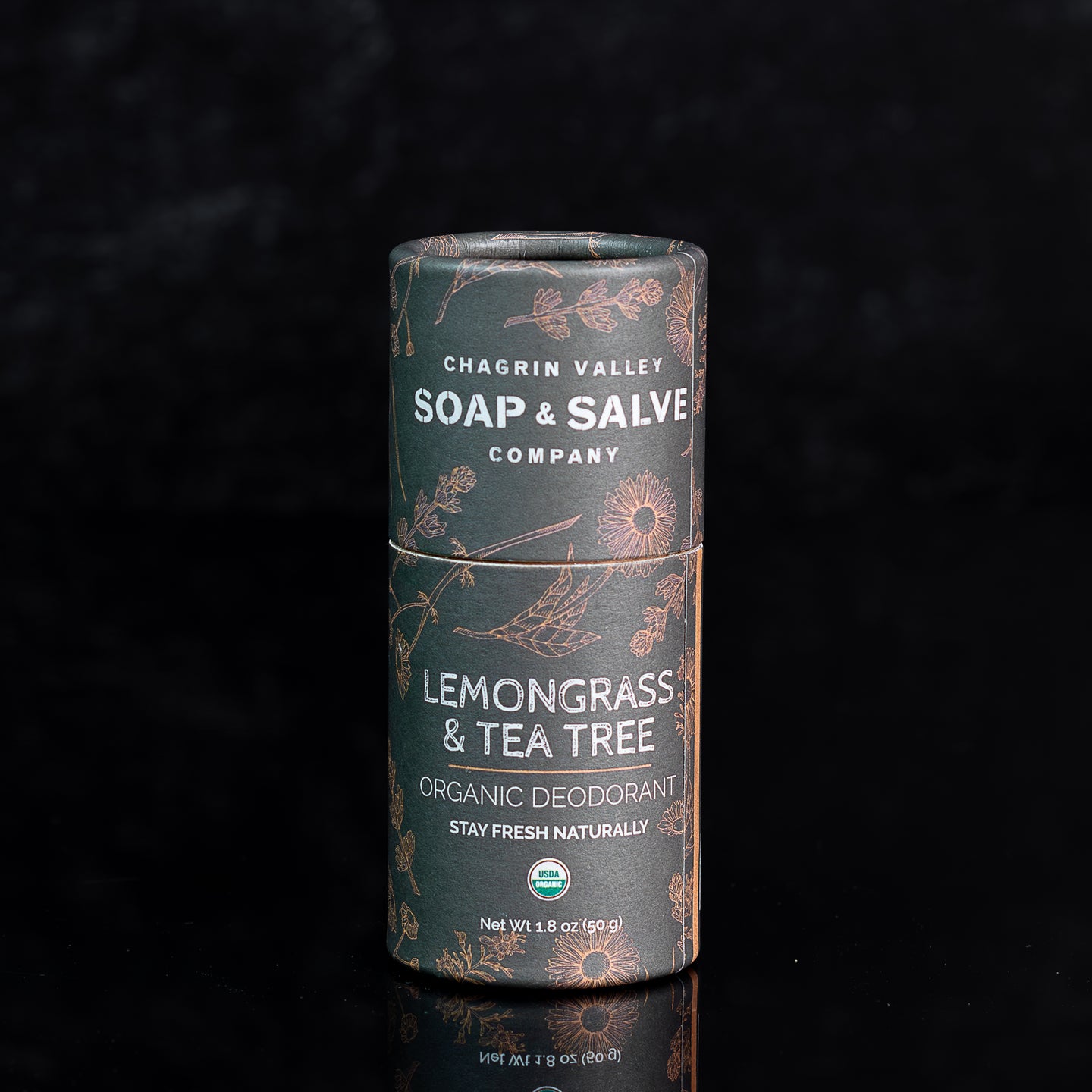
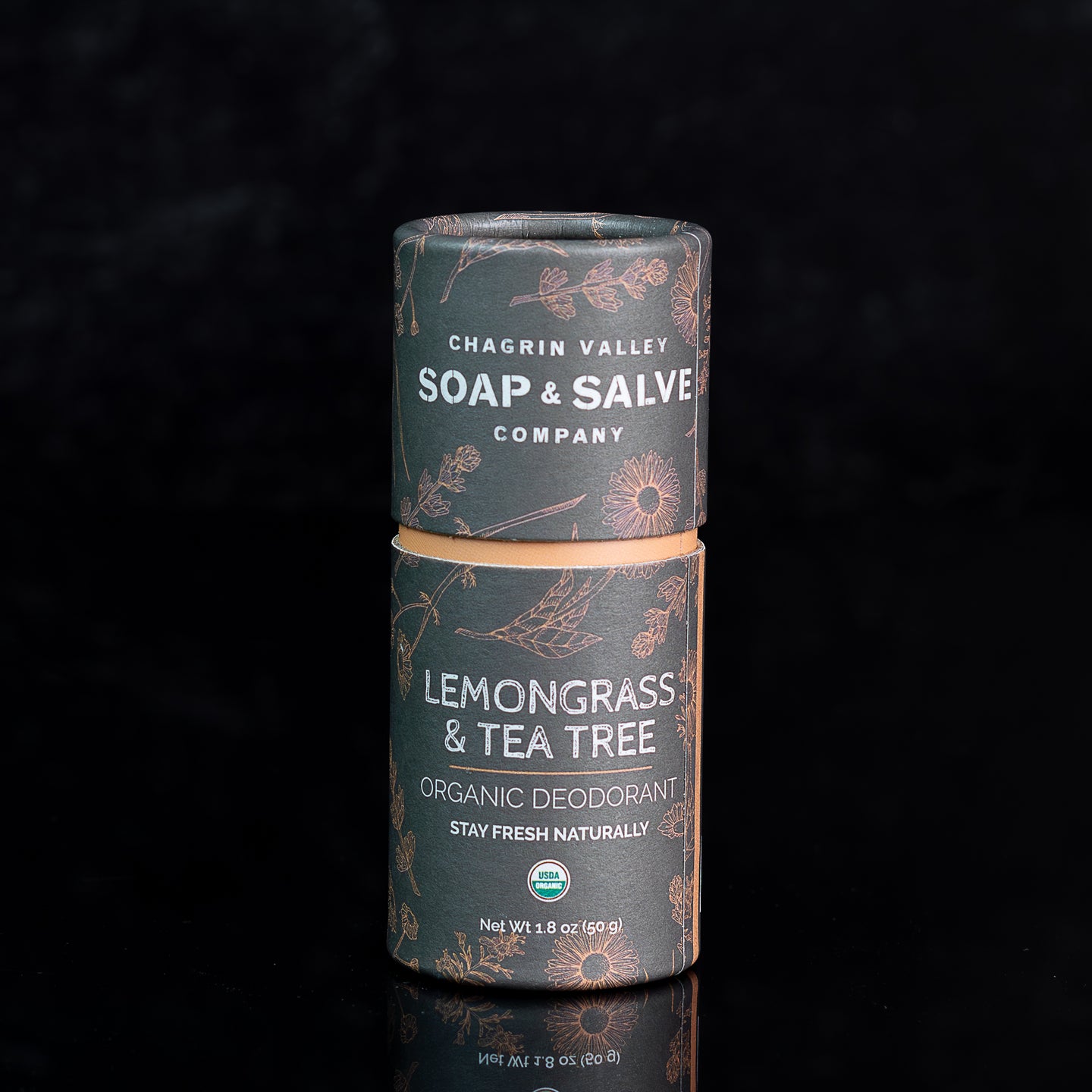
The goal is simple: to Harness the Power & Simplicity of Nature® to cleanse, soothe, heal, and protect your skin and hair!
Our unique formulas rely on moisturizing oils and butters, healing botanicals, and pure essential oils. We choose every ingredient with one end-result in mind….the BEST possible natural skin care for YOU!
 Organic Lemongrass Essential Oil
Organic Lemongrass Essential Oil
 Organic Tea Tree Essential Oil
Organic Tea Tree Essential Oil
 Organic Virgin Coconut Oil*
Organic Virgin Coconut Oil*
*Ingredient is Fair Trade Certified
Did you ever notice that so many people are ticklish under their arm? Your underarms are one of the most sensitive parts of your body.
You may notice that you can feel a simple touch more than you can on other areas of the body. When you add up all of these factors you can see why underarm skin is not only more sensitive, but also more prone to irritation.
Many people transition seamlessly to a natural deodorant. Others report a transition period.
I do not believe in "armpit detox" the way in which it is described by many companies that sell natural deodorant. Armpit "detox" is simply a normal adjustment period.
We have all heard about detox diets and cleanses for your body. Well now some people are advocating a detox for armpits. The ritual usually involves mixing up armpit masks made with charcoal, clays, or apple cider vinegar and applying them to your armpits to supposedly help “detox” the harmful chemicals that may have built up due ingredients in conventional deodorant or antiperspirants.
The idea behind the armpit detox is that it helps make the transition from an aluminum-based antiperspirant to a natural deodorant easier. However, there is no evidence that an underarm detox will reduce odor or make your new natural deodorant more effective.
 Commercial deodorants and antiperspirants change the types and amounts of bacteria in the armpit which explains why you may sweat more and have a change in body odor initially.
Commercial deodorants and antiperspirants change the types and amounts of bacteria in the armpit which explains why you may sweat more and have a change in body odor initially.
Please do not allow a company to tell you that the increase in odor and/or sweat is the result of your body expelling or flushing out toxins. Your body has a great natural detox system that includes your liver and your kidneys, but your skin--not so much.
What people call and Armpit "detox" is simply a normal adjustment period. You do NOT need to buy armpit "detox" kits.
A simple wash with a gentle soap and water will remove antiperspirant or deodorant on your skin and help control odor.
Our bodies are quite resistant to change. Our bodies enjoy the status quo. They see change as a disruption and often resist change even if it is a positive one.
The bottom line--our body needs time to adjust to change and since each of us is a unique individual and our armpit microbiome is different the timeline varies from person to person.
Ultimately, it depends on your unique body chemistry.
Since there was so much information I wanted to share, I have written two blogs:
Part 1: Transitioning To Natural Deodorant, discusses the why you may experience an adjustment period as well as the possible causes of irritation and or rashes that some may experience when switching from a conventional antiperspirant or deodorant to an all natural deodorant.
Part 2: Transitioning To Natural Deodorant, provides some suggestions to help with the adjustment period and or to help alleviate the causes of irritation. Part 2 also answers some common questions about using a natural deodorant.

The most important consideration in any business is its customers. Today's world of misleading claims, false advertising, and simple deception, often leaves consumers trying to discover the truth about personal products and their ingredients.
Some of my favorite products are made with ingredients that just do not exist as certified organic. Why? At this time there are no standards created for ingredients specifically used in the personal care product industry. Organic certification of personal care products is based on the organic food standards set by the National Organic Program of the USDA.
But since we are a certified organic company, we are required to submit documentation that even our "non-organic ingredients" were produced without the use of toxic pesticides, genetically modified organisms (GMOs), sewage sludge, or irradiation.

Why Did We Become a Certified Organic Company?
What Do All of the Organic Labels Mean?
Have you ever enjoyed the scent of a fragrant flower or herb? The fragrance comes from potent, aromatic compounds called essential oils found in the flowers, stems, seeds, bark, roots, fruits, and other parts of plants. It often requires several pounds of a plant to produce a single bottle of essential oil.
Essential oils not only give plants their unique scents but also help lure plant pollinators and protect plants from insects and other predators.
The chemical composition of essential oils may provide valuable psychological and physical aromatherapeutic benefits for some people.
It is important to note that to be a true essential oil, the oil must be isolated from the plant material by physical means only. Essential oils are NEVER extracted using solvents.
Although synthetic fragrances or "nature identical" oils are available at a much lower cost, only natural plant essential oils will provide any aromatherapeutic benefits.

What Are Essential Oils (Much more detail)
How Essential Oils Are Extracted
Why We Use Only Real Plant Essential Oils?
If you are pregnant or under a doctor's care for any medical condition, please consult your healthcare provider before using essential oils.
Pregnancy & Children: We do not provide information on the safety of essential oils during Pregnancy or for use in Children because the available information is very ambiguous and often contradictory. If you’re interested in using essential oils during pregnancy or with young children please do your own research and consult your doctor, midwife, or health care professional before use.
Chagrin Valley Soap & Salve has been Leaping Bunny Certified since 2013.
 The Leaping Bunny Program was developed in 1996, by The Coalition for Consumer Information on Cosmetics (CCIC), to identify and support companies that are doing their part to help eliminate the unnecessary use and mistreatment of animals to test cosmetic products and ingredients. The CCIC is made up of eight animal protection groups including the Humane Society of the U.S., as well as groups from Canada and Europe.
The Leaping Bunny Program was developed in 1996, by The Coalition for Consumer Information on Cosmetics (CCIC), to identify and support companies that are doing their part to help eliminate the unnecessary use and mistreatment of animals to test cosmetic products and ingredients. The CCIC is made up of eight animal protection groups including the Humane Society of the U.S., as well as groups from Canada and Europe.
At Chagrin Valley we do not test our finished products on animals (other than human volunteers). But what about the raw materials, the ingredients we use?
Many products display labels claiming that their finished product is ‘not tested on animals’ but this does not guarantee that the product ingredients are actually free from animal testing.
The CCIC Standard is a pledge that a company makes to remove animal testing from all stages of product development. Our pledge to buy ingredients that are cruelty-free is integrated into the purchase agreement for all of our suppliers.
Personal care products displaying the “real” Leaping Bunny logo are certified ‘cruelty-free' using the internationally recognized Humane Cosmetics Standards. These rigorous standards require that no animal testing is performed or authorized for finished products or any of the ingredients in any stage of product development by the company, its laboratories or its suppliers after a fixed cut-off date. All Leaping Bunny companies are subject to independent audits and pledge commitments that are renewed on an annual basis.
This annual renewal is a key requirement that sets the Leaping Bunny Program apart from other cruelty-free certification programs. Companies that manufacture products, as well as their ingredient suppliers, must annually recommit to upholding their promise to not conduct animal testing on any finished products, ingredients, or formulations.
Why is this annual commitment renewal important? "Because product formulations change, suppliers come and go, and manufacturers develop innovative lines to meet consumer needs. But we know that compassionate consumers need to be confident that no animal testing is involved in the products they use."
At Chagrin Valley Soap & Salve . . .
The Leaping Bunny Program provides
the best assurance to consumers
that they are making compassionate shopping choices
by purchasing Cruelty-Free skin care!
The "certified organic" labeling has been developed by the USDA and refers to organic claims and labeling on food and personal care products in the United States. The USDA has very strict guidelines for the percentage of organic ingredients necessary to receive organic certification. Other countries have their own certification procedures, requirements, and standards. Labeling criteria and allowable ingredients differ from those in the US.
 The USDA Organic Logo Label can be used on products that meet the standards of the first two tiers of the organic labeling system in which 95 - 100% of the ingredients are certified organic.
The USDA Organic Logo Label can be used on products that meet the standards of the first two tiers of the organic labeling system in which 95 - 100% of the ingredients are certified organic.
Most of our non-soap products fall into this category and display the USDA logo!
 The Certified Organic by OEFFA label is used in our company for two reasons . . .
The Certified Organic by OEFFA label is used in our company for two reasons . . .
Soaps and Shampoos: These products contain at least 8% of the sodium hydroxide due to the process of soapmaking. Our "organic" soap is about 87% to 92% organic, but the USDA standard states that a product must be made of 95-100% organic ingredients in order to bear the USDA Certified Organic seal shown above. We are also not allowed to use the words "organic soap" on the label.
Wildharvested Ingredients: When using any agricultural ingredient (any ingredient that has a biological origin) that is not certified organic the same labeling rules we use for soap apply.
The USDA rules for proper labeling state that the products may display the certifying agent's logo but not the USDA organic logo. Our USDA certifying agency is OEFFA (The Ohio Ecological Food and Farm Association). Their logo is displayed on our "organic" soaps and shampoos.
Why do some soap companies use the word "organic" on their labels--even though it is against the rules? Click Here to Read More about Rules for Organic Labeling of Soap!
We sometimes use an unofficial symbol for products made with "natural" ingredients that do not meet the criteria for either label above. You may see this type of symbol on products, like the Dead Sea Black Clay, Bamboo Charcoal, and Loofah Pumice Foot Soaps and our Mud & Clay and Rosemary Mint Charcoal Shampoo Bars.
Organic certification is based on organic farming and agriculture standards. As a result, the list of allowable non-agricultural ingredients (like clay, salt, mud etc) is based on raw materials used in agriculture or food production. Unfortunately, ingredients like some Clays, Pumice, Dead Sea Mud and Bamboo Charcoal are not used in farming or food production and thus do not appear on the list.
Although it may seem long, this is really a very brief description. For more detailed information please read, "What Do All Of The Organic Labels Mean?"
 We hand make all of our own products in small batches to ensure freshness, consistency, and perfection.
We hand make all of our own products in small batches to ensure freshness, consistency, and perfection.
Our products are not made to sit on store shelves for years and years.
Although there are natural preservatives within the chemical structure of many natural ingredients, they not as potent as the synthetic preservatives used in commercial products to prolong shelf-life.
Other than soap, our products are remade every few weeks and none are very old when they are sold. Our non-soap products should be opened within 6 months of purchase.
Since we use no preservatives or chemical stabilizers, the more important question is, "how long will the product last once it has been opened?
Once opened, skin care products become exposed to dirt and microorganisms (bacteria, yeasts, and molds) that are found in the air and on the skin.
As soon as you open and begin to use any product, simply the way in which you use it will affect its lifespan.
So, we use the PAO (period-after-opening) symbol. These symbols are already available on the product pages of our website and we are in the process of adding them to all of our labels.
The POA symbol is a standard symbol that identifies the useful lifetime of a skin care product after it has been opened for the first time.
 As you can see from the picture, the symbol is an open jar with a written number and the letter "M" for the word "months."
As you can see from the picture, the symbol is an open jar with a written number and the letter "M" for the word "months."
A product with a "9M" would mean that it is good for 9 months after opening.
Tip: write the date you open a product for the first time on its label so you can keep track of the period after opening.
Our POA number represents our best suggestion. There are many factors that can affect the lifespan of a product. If a product is discolored, has an unpleasant smell or looks odd, the product should not be used and should be discarded.
If you’re like me, and you find an old dusty product hiding in a drawer, makeup bag, or even a suitcase from your last trip, you can call us with the lot number and we can verify its age. Obviously, if it seems off in any way, toss it!
Please note: This PAO symbol is widely used in Europe to recommend the length of time a product remains usable after opening, for products that have a shelf-life of at least 30 months. Our products do NOT have a shelf-life of 30 months before opening.




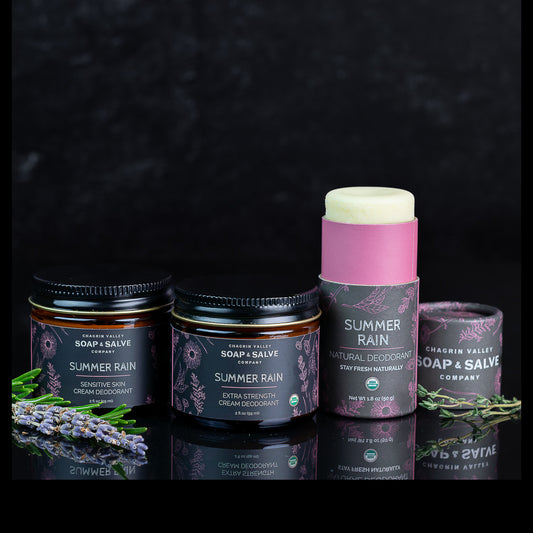
Why use a natural deodorant? The simple answer--why not! While many synthetic skin care ingredients are "considered safe” in small doses, I wonder how much is "a safe small dose" after 65 years.
Read Post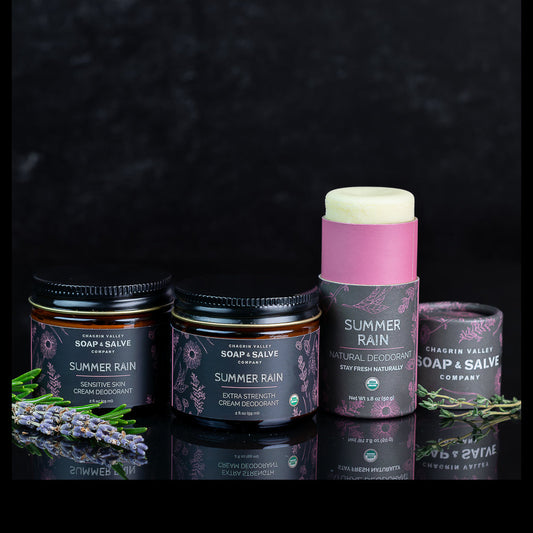
Help Me Choose a Deodorant: No two people are alike as far as their body chemistry goes. Gender, age, race, hormone fluctuations, diet, health, and even medications can affect body chemistry. Body chemistry comes into play with deodorant more than any other hygiene product.
Read Post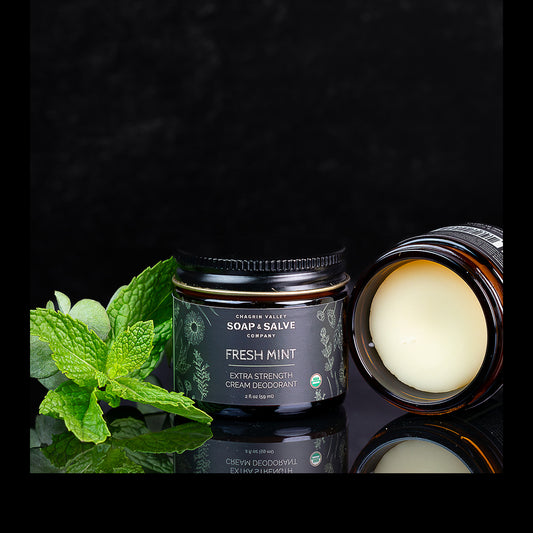
Transitioning to natural deodorant is a unique experience. Since commercial deodorants can change the armpit microbiome, a product change requires time for the body to rediscover its natural balance.
Read Post